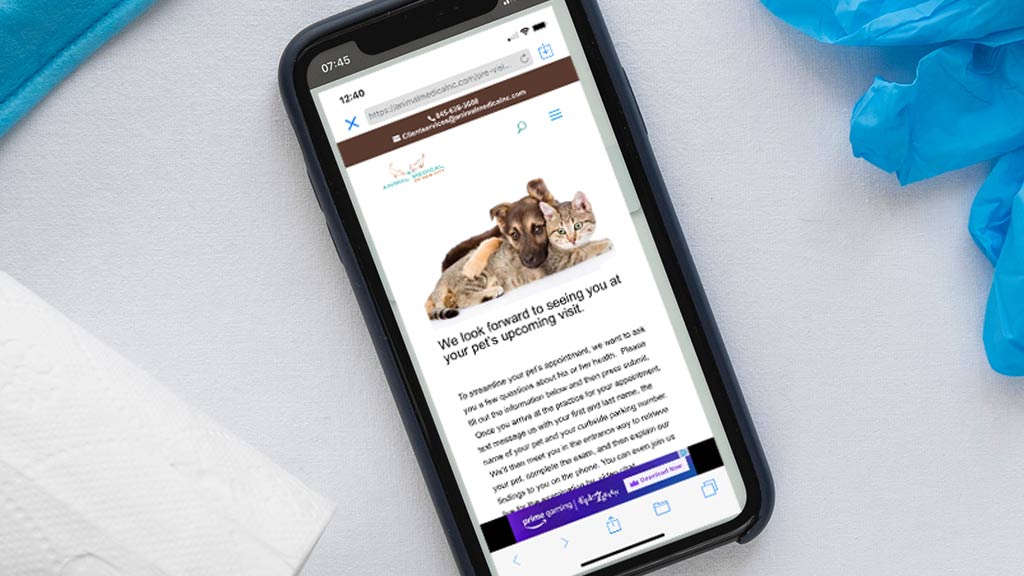Have you tried to get new ideas off the ground at your practice, but you were met with employee pushback and a lack of teamwork? Design Thinking is an approach to innovation that has helped some of the largest companies in the world dominate global markets. It’s probably right for your small business too.
What is Design Thinking?
Design Thinking is a collection of problem solving techniques that are common to inventors (designers) that favor innovation. It’s rooted in a belief that empathizing with the customer’s life, needs, and thinking will inspire team members to see opportunities to adapt or completely reinvent existing services and products to be more appealing to consumers.
Design Thinking has been the genius behind many of today’s most successful product and service companies including Toyota, Apple Computer, Samsung, Nike, Microsoft, Intuit, and Pepsi Cola. Governments the world over have used it to fix stagnant social programs; public schools and universities have used it to increase student comprehension, retention, and graduation rates; and hospitals have used it to improve patient satisfaction and outcomes. Its principles are taught at every major MBA program in America.
$1000
$1000 referral fee for veterinarian applicants. Sign on bonuses also available. More.
The Design Thinking Process
For teaching purposes, Design Thinking Process can be thought of as five steps:
Empathize With Your Customer
Some go so far as saying that you should live the client experience. Empathizing with your customer forces a new perspective on the impression you make on consumers, how your unique client proposition is perceived, and whether your customer truly sees value in what you do (as opposed to thinking that your service or product should have value).
Define
Having viewed your company’s shortcomings through your clients’ eyes, define what your company’s weaknesses are and sketch out a rudimentary idea of what you need to change/invent to improve. Questions to ask yourself during the Define step include:
- What is the goal(s) of this new service/ product? What is it designed to do or improve upon?
- What are some of its essential elements/functions?
- What are some of its distinguishing qualities?
Ideation
Ideation is arguably the most enjoyable part of the Design Thinking process. It differs from typical brainstorming sessions in that it pushes participants to think outside boundaries. Inside the Design Thinking process, Ideation is usually on the right track if it upsets the status quo, rather than working inside prescribed confines. It discourages words like but and can’t. Design Thinking insists that a more perfect client service/product is possible, that the planners at hand are more than capable of discovering what those possibilities are, and that the process itself will be enjoyable and personally rewarding provided that participants don’t put limits on their creativity.
Prototype
Painters, amateur videographers, actors, paper plane enthusiasts, and those handy with a box of markers will love the Prototype phase of the Design Thinking process. In the Prototype phase, thought leaders are encouraged to breathe more life into their ideas by drawing them, filming them, acting them out, or even transforming the entire meeting room into a make believe set of the invention as a way to help participants immerse themselves in the idea. This is a chance to revive your inner child, to regress back when you could turn a cardboard box into a spaceship and everyone who climbed under it believed they were about to fly to Mars. This is the scene from Close Encounters when Richard Dreyfus is compelled to shape his mashed potatoes into the mountain he knows will host the next alien visit. One hospital, interested in previewing what a new workflow would look like, hung sheets from the ceiling so they could get a sense of where partitions should be built if they moved forward with their ideas. Prototypes are enjoyable, affordable, and timesaving tools your team can use to explore and hone ideas.
Test
Once the design team is satisfied with the prototype, it’s time to test the service or product. The testing phase is best rolled out on a small scale with an invested team and an encouraging project manager at the helm. This is known as a beta or road test of an idea. Not all the elements of the service or product are necessarily finished or decided upon, but the general concept is served up to test audiences so that the designers can learn more about the service/product and gain valuable feedback from consumers.
Feedback
Throughout the process, information should circle back to designers and participants to help them adjust their efforts. In the Design Thinking process, feedback best works as an ‘I can build on those ideas’ approach, rather than a ‘that’s not going to work’ tactic. In other words, when possible, adjust the course of the space ship rather than scrap the mission.

Major Companies Embrace Design Thinking
Apple Computer
Steve Jobs once lamented that the soaring condor outstripped man in its locomotive efficiency, but that the invention of the bike allowed man to outpace all other animals on earth. The news inspired Jobs’ famous quote, “That’s what I want Apple computer to be, a bicycle of the mind.” Job’s exuberance for Apple products and their potential to change the world was an inspiration to employees at Apple. As part of his legacy, the team ensures that every product’s feature is rigorously focused on the needs of consumers, then honed in an ongoing process through feedback and iteration. Next time you go into an Apple store, open an apple package, or touch the screen of an Apple device, note its unique design, a testament that Apple isn’t creating what it thinks it should create, but materializing customer inspiration.
Bank of America
By studying the lives of its customers, BOA realized that a key demographic was missing: Twenty-to-thirty-year-old moms with kids. Realizing that this group wanted to save, but usually didn’t have that much cash left over at the end of the day, BOA created a debit card that allowed users to round up charges and have the extra change automatically deposited into the user’s bank account. This small, but incremental debit gave clients the chance to finally start saving money without feeling so much of the pinch. The plan attracted 10 million new customers and 1.8 billion dollars in savings.
Oral B
This toothbrush company had a problem: kids found its adult-sized toothbrush too big to handle. Oral B figured they knew how to fix things; just shrink the size of the adult brush, right? Wrong. Kids mishandled the smaller brushes too. Oral B, after actually watching kids brush their teeth, redesigned their brushes to be bigger and squishy, much more forgiving of kids’ awkward motor skills while brushing. The result? Their brush was the number one seller for 18 months!
Kaiser Permanente
Every day, Kaiser nurses began their shift by rounding for 45 minutes with the previous shift’s nursing staff. Nurses of both shifts hated that so much of their busy day was consumed with the transfer of information from one team to the next. Instead of defining the problem as a ‘too much time rounding’, nurses looked at the issue through the eyes of their patients, ‘shift-change information-transfer improves the patient experience’. With this insight, the nursing staff kept the rounding procedure, but decided to do it in front of the patient. The new way allows both teams to spend more time with patients, make introductions, and personalize all the information. Patient positive reviews have soared.
Have A Realistic View Of Failure
Managing, innovation, endless change…it’s tough being a leader. We’d like an easy way out. Something like: The Six Easy Steps To Design Thinking. Reality is rarely that simple. Design Thinking is founded on the above-mentioned principals, but the real magic rests in a manager’s ability to bring creativity and adaptability to the Design Thinking meeting itself. Still, It’s likely that neither you, nor your team have developed anything completely new before and it’s inevitable that you will fail along the way…many times.
Failure is a normal part of the Design Thinking process. Accept it as a leader and help your team navigate it as a group. Encourage a mature look at failure: that it is not a sign of inferiority, but a normal part of the learning process.
Tips for A Successful Design Thinking Meeting
The point of Design Thinking is to stimulate new perspective and consequently inspire new approaches to stale business practices. In most Design Thinking meetings this is done by encouraging the participant to step inside the consumers’ shoes and to live his or her experience with your product or services. Here are ways to encourage that with your team:
Fly On The Wall
When I visit your practice, I start in the lobby where I sit with clients, introduce myself, and get to know them and their pet. Liking both pets and people, this comes easy to me. I explain that I am observing customer service so that I can help the practice improve, then request if I can follow them into the exam room. Inside the room, I never talk. I push myself into a corner and watch. If the pets are removed to treatment, I remain with the client to get to know them better. I ask things like, “How long have you been coming to this practice? How did you find out about them? What do you like best about this place?” I often wish I had a recording of the beautiful things clients say about the business and the team and lament that I am usually the only one that ever hears such encouraging feedback.
When the client is ready for invoicing, I follow her out to the front desk, watch the check out procedure, wish the client goodbye, and then start the whole cycle over again.
You should do what I do. Have team members do it in short shifts. Everyone should have a go at it. It will be one of the most eye opening views of your practice you and your team have ever had. You will see dirt, hear sounds, smell smells, hear conversations, and most importantly, gain consumer insights that you have never had before. I can’t recommend it more highly. When you are through, share your experiences with the rest of the team in a productive, mature manner.

An In-person Lunch and Learn For Your Team?
It can probably be fully funded! Find out how you can bring a fresh perspective and a lot of inspiration to your next team meeting! Click for more info.
Most Memorable Client Complaint
Break your team into small working groups and agree on a most memorable client complaint. Write the complaint on a piece of paper and have your meeting organizer read the ideas from all the groups aloud. Agree on the number one, most memorable complaint, then return to your working groups and imagine the life of the client starting from the moment that they woke up until the moment that the complaint occurred. Is it easier to relate to the client complaint now? Is there anything about the complaint that highlights an ongoing issue at your practice? Is it possible to take the next step of the Design Thinking process and define this issue more concretely, then work through the Definition stage of Design Thinking to outline a solution?

Understanding the Real Problem
Design Thinking emphasizes the customer’s perception of what should be changed to improve a product or service, not the entrenched, often biased view of those working inside a company. Hence, living the client’s experience doesn’t just give you a new perspective, it sometimes redefines the problem. As an example, consider Kingwood Trust, a U.K. charity helping kids with autism. As described by Jeanne Liedtka in Harvard Business Review’s, On Design Thinking, a design thinking team member got to know one of the patients under the organization’s care. At first she observed seemingly destructive behavior, a patient picking apart a sofa and rubbing indentations in a wall, but during a second visit to the patient’s home, she actually took time to mirror his actions. She laid on the couch and picked at the sofa herself, then crouched next to a wall, pressed her head up against it as the patient had, and then repeatedly rubbed her hand against the plaster board. What she realized was that the behavior didn’t feel destructive at all, on the contrary, it felt soothing. The experience led her to see that the solution to the picked apart couch wasn’t, ‘Stop the destructive behavior’, rather it was ‘Find safe outlets of tactile comfort for patients’. Seeing the problem through the eyes of the patient helped redefine the problem and to formulating a completely different solution; it shifted the design focus away from protecting walls and couches to building spaces that improved the patient’s comfort and played to his or her strengths and interests.
Post It Note Gallery Walk
One of the reasons why Design Thinking fails to stimulate group thought is because team members feel the looming presence of a powerful team member (usually the practice owner, senior staff member, or manager) who they believe already has strong feelings on whatever matter is at hand. When you enter into any process where ideas need to be shared, try writing them on Post It notes, arrange them on the wall of your meeting space, and ask team members to do a ‘gallery walk’ of the ideas. Without knowing who wrote which idea, you can trust that your team will pick the one they think is best, not the idea they believe they must choose to please the powers that be.
Beta Testing
It’s hard to get the whole practice up and running with a new concept. Instead, grab a few enthusiastic team members and have them test the new idea in the practice as a small group. Allow this team to explore the idea on its feet, make changes amongst themselves, and then bring the results of their experimentation back to the group. Later, allow members of this same group to act as trainers for the entire hospital when it comes time to roll out the new service.
Why Employee of the Month
Instead of just naming your favorite employees of the month, give equal attention to why you nominated them as the best including the innovative ways they have attempted to improve on patient or client care. These star employees should be viewed not just as great workers, but as little prototypes for what all your employees could be if they were to adapt some of the same approaches to service.
Report On Your Employee-Discount
You should make your employee, veterinary-service discount conditional to the employee receiving the service exactly as a client would. This means calling the practice for an appointment, checking in at the desk, waiting in the lobby, hanging out in the exam room…the whole works. Afterwards, have the employee debrief the rest of the team regarding their experience.
Conclusion
Embark on a mission to change how you do business. In light of recent technological changes, wage demands, employee shortages, and the growing use of the internet as a place to do business, change isn’t just imminent; it’s overdue.
The right way to conduct the Design Thinking process is the persistent way. Trust that the work you do is not just spinning your wheels, trust that you will get better, trust that inspiring hospital-wide creativity and insight will always be a superior approach to problem solving than top down management, albeit it a messier one. Learning how to view the world’s problems through the eyes of an inventor is a great gift…an Edison light bulb that will illuminate both your workplace and your individual life.










